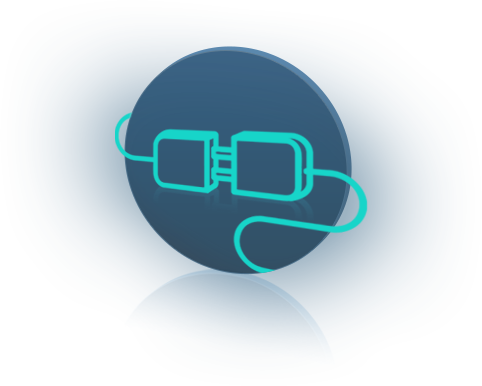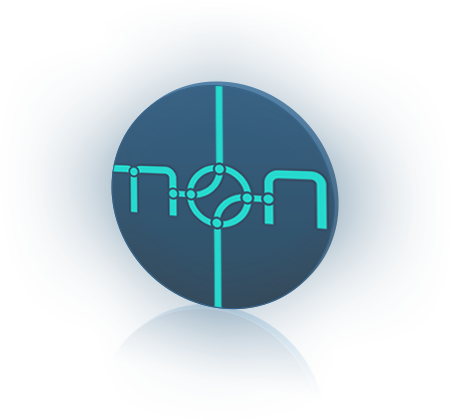Guiding Principles
The guiding principles we kept in mind while building MONICA were:
| GENERIC |
|---|
| Built as a monitoring & controlling framework. |
| MODULAR |
|---|
| Service oriented architecture for easy integration and upgrades. |
| STANDARDS |
|---|
| Built with standardized, open-source engines. |
| PLUG & PLAY |
|---|
| Super-easy to add new drivers, no additional tools or licenses needed. |
| WEB GUI |
|---|
| HTML5-powered web interface accessible from any browser-equipped machine. |
| FLEXIBLE MIMICS AND DASHBOARDS |
|---|
| Flexible, scalable schemas and user-customizable dashboards. |
| CONFIGURABLE |
|---|
| As configurable and extensible as possible with whitelabel-enabled look and feel. |
| SECURITY |
|---|
| Encrypted server-client link, token-based access control. |

Generic
The main drive behind MONICA was to create a flexible and manageable M&C system that can grow and evolve by using the best of modern technology.
Its out-of-the-box, rounded bundle of core features can support any small to large-sized operation with ease. Be it a set of physical devices or software components, you can configure your setup, monitor and control (both manually and automatically) and use its reporting features to make use of collected data.
However, if you need a specific set of functionalities and/or a tighter integration with your other systems you can start building on MONICA's framework and you will soon see how easy it becomes to build tailored, complex solutions.
No matter if you use it as an out-of-the-box solution or as a framework, you will get the support of our highly experienced engineers with great expertise in satellite and M&C domain.

Modular
All features in MONICA are implemented as modules, following SOA principles. Its event-driven client-server architecture includes a powerful, standardized REST API which enables a flexible and fast integration with other systems.
This supports fast development and upgrades, as well as flexibility in tailoring the system.

Standards
Monica is based on industry standards and open protocols only, there are no proprietary things inside. If we include any 3rd-party framework, we take care it's the best open-source framework available (matured, reliable, widely adopted, with powerful community support).
This is beneficial from many aspects: no vendor lock-in, added value from community updates, flexibility and speed in development and bug-fixing; and of course, reduced overall costs.

Plug & Play
One of the main requirements for MONICA is to be able to add a support for a new device to the system in the easiest possible way. This is why plug-in concept became one of the biggest advantages of MONICA.
In order to add a new driver (new device support), you can write a simple XML file to map device specific parameters to MONICA's related communication protocol. No coding, no recompiling – just add an XML and it's done!
This is also the reason why our library of included drivers is constantly growing.

Web GUI
MONICA's modern (HTML5, Angular), lightweight web-based graphical user interface ensures that the operators are given a comprehensive and up-to date overview on the whole monitored system in a user-friendly way at all times.
Multiple operators can access MONICA from different machines, using a standard web browser. Its screens can be opened in separate browser tabs for full utilization of multiple-monitor setup.

Flexible Mimics and Dashboards
Good M&C systems adopt the WYSIWYG approach to system visualization. That's why we pay special care to the presentation layer of our MONICA system. We employ the best of today's frameworks and SVG (Scalable Vector Graphics) to be able to present complex networks of intertwined equipment, with various grouping and separation levels and with emphasis on crucial information.
MONICA presents the operator with the working conditions of his system in a clear, precise, interactive manner and allows an efficient, surgical approach to the important indicators within huge amounts of data. Global overview and drill-down to specific instrument, as well as real-time indicators come out of the box. The SVG schema mimics allows for any kind of drawing that is in return crisp and clear at any zoom level.
On top of that, the operator can create own custom dashboards as collections of so-called 'widgets'. Widgets are blocks of different types of data representations or available actions (charts, tables, single - parameter blocks, command buttons etc.). The dashboard allows for a fast, flexible and convenient way to adjust the operator's view on the system wherever and whenever day-to-day operations require.

Security
MONICA implements a role-based access control that can be used as-is or can be integrated with your existing LDAP or Apereo CAS enterprise single sign-on system. Communication with external modules (and client browsers) is encrypted as it goes over HTTPS.
Additionally, MONICA's components use a token-based access system to coordinate multiple users (of the same tenant level) making changes on the same element. Only one user can hold the token at one time so there's no danger of inconsistent updates.
You have question? Please contact us Contact Us
